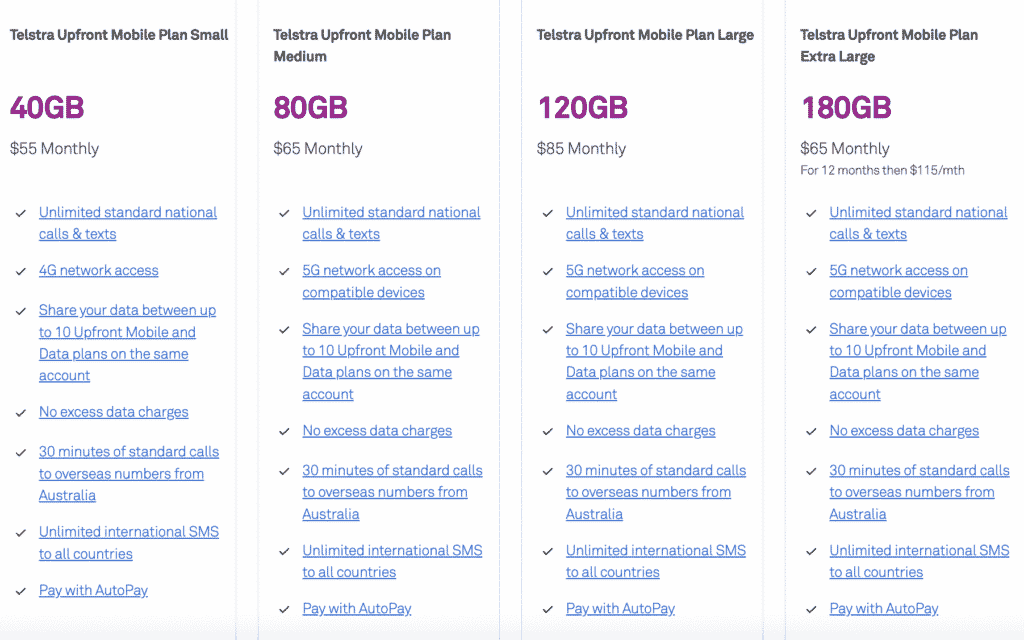
Importance Of Pricing Strategy in Preventing High Price Sensitivity 🏋️
Technological advancement has led many of us to be glued to our phones. More than a luxury, they are becoming a necessity — whether it’s for work, staying connected with our loved ones, shopping, booking a ride, or even something as simple as reading the news. But did you know that the telecoms industry has had more of a focus on pricing plans and revenue management than other businesses?
>Download Now: Free PDF How to Drive Pricing Strategy to Maximise EBIT Growth
Along with increasing competition and overly saturated markets, customers may start to become overly fixated on prices alone. The danger of high price sensitivity is that businesses lose control over purchasing behaviours and have less room to push value.
This is when customers start to reject your offering based solely on price without considering its value or worth. It’s a similar scenario with other industries such as hotels, car rentals, and airlines.
In this article, we will discuss the importance of pricing strategy and how it can help prevent high price sensitivity. Then we will focus on a more specific subject, the telecoms industry.
For this part, we will explore pricing methods and strategies that are being used in mobile phone plans. We will go into how these affect choices and preferences from the lens of both the customer and the business owner.
Table of Contents:
I. Preventing High Price Sensitivity – Importance Of Pricing Strategy
II. Pricing Methods And Strategies Behind Your Mobile Phone Plans
Are you losing profits because of price sensitivity? If you are, then you may have to execute a better pricing strategy.
At Taylor Wells, our findings show that with the right set-up and pricing team in place, incremental earnings gains can begin to occur in less than 12 weeks. After 6 months, the team can capture at least 1.0-2.25% more margin using better price management processes. Fast forward into 9-12 months, businesses are very often generating between 3-7% additional margin annually as they identify more complex and previously unrealised opportunities, efficiencies, and risks.
We argue that price sensitivity is often a result of commoditised customers. These are individuals who are suspicious of the market. They usually prefer convenient and simple transactions. We believe that understanding the importance of your pricing strategy is the key to countering or lessening the effect of commoditised customers and price sensitivity on your business.
High Price Sensitivity – Importance Of Pricing Strategy
Pricing can affect everything about how your product is received by the market. That is why it’s critical to understand the importance of pricing strategy. A price that is too low may not generate enough interest or have enough of a margin for profit. Set the price too high and you may also lose customer’s interest.
The key is to find your Goldilocks zone. This also involves a great deal of insight into your positioning and target customers. Brands like Supreme may seem outrageously priced, but their execution brilliantly cultivated hype and exclusivity instead. What happened when they set the price high was that they drew in customers on the premise of prestige and buying into a culture.
Unfortunately, this isn’t a cut-and-paste template. Businesses won’t find the same success using the same pricing method. It’s all about tailoring your strategy to your unique business model and branding.
The lack of a grasp on these aspects could also trigger high price sensitivity. This is one of the main things you’ll want to avoid.
What is Price Sensitivity?
Price sensitivity in a nutshell refers to how sensitive your customers are to price. This measures the number of sales you could stand to lose or gain depending on how you raise or lower your prices.
Customers with lower price sensitivity mean you have more command over your prices. Even if you raise your prices, you won’t lose customers because they’ll likely attach more value to your product or service quality rather than how cheaper an item is compared to your competitors.
Higher price sensitivity means that your customers are more likely to fixate on price, giving you less wiggle room to alter price points. Raising prices will cause customers to reject your product or service in favour of cheaper alternatives.
High price sensitivity is often associated with the idea of commoditised customers.
Commoditised Customer
Commoditised customers refer to individuals that become highly sceptical in a given market, have routinized buying behaviours, and prefer fast and easy transactions regardless of the brand or product. Products competing against each other become indistinguishable in terms of features and functions. As a result, this drives all the focus towards price and ease of access.
The danger of falling into a commoditised market is that you are no longer able to leverage the value of your product over prices. Customers become uninterested in innovations and creative marketing.
It’s tough to get customers out of this mindset, but it is possible. You’ll need to take extra steps to address the unengaged customer. Take note of psychological states and use insight and feedback to your advantage.
As with most things, the best cure is prevention. Diminish price sensitivity before it gets too high by optimising your pricing strategy.
Fixations on price are hard to overcome, but with the right strategy, it is possible to reshift customer focus onto value. These are several key points you’ll need to consider:
Revise Your Pricing Structure
Your pricing structure has all the capability you need to drive value towards your product and away from the actual price point. There’s only so much market testing you can do.
Let’s take a Chinese-based company, OnePlus, as an example. The OnePlus One was initially introduced as a flagship killer with a $299 price tag. The phone’s specs were commendable.
After six generations of phones, the company announced the OnePlus 6 with a starting price of $529. Whereas most manufacturers have increased their prices over the years, this is one of the biggest. The reason? OnePlus’ shift from a cost-based pricing structure to a value-based strategy.
Every marketer wants to create a brand that can utilise higher prices. OnePlus is no different. OnePlus concentrated on developing its brand. They stopped talking about parts costs and started talking about performance. This allowed them to incrementally raise their rates over the years.
OnePlus’ pricing structure shift made their phones valuable in the eyes of consumers. The phone manufacturer — as well as their prices — have now entered the premium mobile market.
OnePlus’ had a successful pricing structure shift from a cost-plus model to a value-based strategy that reflects what people are willing to pay for a good phone — similar to Apple and Samsung.
Overpricing To Drive Prestige
A counterintuitive method to stimulate interest and value is to overprice to drive prestige. Many ubiquitous brands do this, like Supreme and Apple.
Apple products are definitely on the more luxurious end of technology, yet they have managed to maintain a consistent, strong appeal and demand. If done well and combined with excellent marketing strategies, you could stimulate a lot of curiosity around your products.
For example, at higher price points, customers are compelled to wonder what justifies the prices. They start looking at the quality and unique features you offer. The more curious they are, the more they remember your product. And as long as there is an answer to their curiosity, you can achieve prestige.
Apple products = superior quality and design.
Organic products = natural processes, free trade harvesting, better livelihoods for farmers…and so on.
Equalising Prices
Equalising prices between your product offerings is another interesting way to drive more emphasis towards value rather than price. What this means is that you offer a fixed price no matter the variation.
Say, you walked into a music store or an accessories shop and saw that everything was the same price, you’d naturally ask which variation is right for you. But if you walked into the same stores and saw varying prices, your immediate focus may be the item that saves you the most money or has the best features/functions suitable for your needs (for sports activities, office attire, etc).
Price Partitioning
A slightly more controversial way to get customers to pay attention to value is price partitioning. This method involves breaking down an offered package into its components. For example, rather than selling something as a whole, you reduce the base price but omit certain features and offer them as an add on.
Common examples include airline tickets with add-on baggage or meal options or cable television with add-on channels. Unfortunately, this can have repercussions if not done exactly right. So, unless you’ve done adequate research and testing, this isn’t the best strategy to try.
〉〉〉 Get Your FREE Pricing Audit 〉〉〉
Bottomline – Importance of Pricing Strategy
In conclusion, pricing strategy is incredibly important in preventing high price sensitivity. Once you see that your product or service is being commoditised, it’s time to revise your structure. It may take a little bit of trial and error, but that’s how you find out what works. The best strategy is to hire a competent pricing team with expert knowledge that can help you decide which direction your business should take.
⇑ Table of Contents

Pricing Methods and Strategies Behind Your Mobile Phone Plans
You’re generally presented with a couple of options for each handset whenever you visit a mobile phone shop. The way that these are presented to you has been carefully thought out before you choose a phone and a plan.
The tactical pricing methods and strategies used for mobile plans involve a lot of psychology. We’ll be discussing some common ways telecoms entice you into buying their plans.
As a reference, we’ll be examining these Telstra phone packages:

Tactical Pricing Methods and Strategies
In line with our example of online pricing pages for online companies — the example above follows some simple and tactical pricing methods and strategies.
Highlighting
Phone companies highlight the plans they want you to choose. In this way, your eye is subconsciously drawn to the plan. This is a form of psychological pricing, using tactics that aren’t too obvious, but they work to catch your attention.
For example, when big brands enter a new market or an emerging economy, they typically choose price skimming. Usually, they do this by initially setting the highest price for a new product and lowering it over time. A significant percentage mark up on costs is also applied. This is also known as a cost-plus price skimming approach.
In other cases, many businesses set a higher price by multiplying the home country price by the exchange rate and adding the customs duties and taxes on top.
Bundles
These are some of the best ways to convince people that they should purchase a certain plan. This is an example of value-adding. The extra features are added to convince you that you’re getting a good deal. Interestingly, Telstra arranged their bundles by order of expense. That’s even after research showed that it isn’t the best way to present products.
Price Floors
Phone companies commonly cap lower packages. This can be in the form of limiting the number of cheap plans, or in capping their services. Putting caps on lower plans convinces people that the more expensive plans are worth it.
Charm pricing or bumps sets the perception of lowering a price. Putting $10.99 instead of $11.00 categorises the item into the $5-$10 range. So, how you set your price puts the product in specific categories. This is common in the real estate and vehicle industries where customers often shop with a specific price range in mind.
Options
Telecom companies typically give you options that you might use to compare to the phone plans. There’s usually an option to buy the phone outright. But why would you want to do that when you could have a phone and a plan all in one for affordable monthly payments?
Then there are also options for insurance packages, which give the customers the option for added security.
Predictability Over Volatility
Many experiments show that people choose flat or predictable pricing over volatility. That means they will pay more to feel secure rather than what would logically save them more money! This enables profit maximisation for telcos. Similarly, the entire insurance industry worldwide is built on the same premise.
In the context of a mobile phone plan, statistical evidence shows that customers who pay for a higher data usage plan could save considerably by using a lower data alternative (and paying for extra charges in the months that they need data).
However, many risk-averse customers choose to buy a form of insurance against surprise cost peaks and troughs — by paying for the higher data usage option.
What we can gather from how customers pick phone plans is that psychological nuances can be more compelling than we think. This makes studying consumer behaviour more important than ever.
For mobile phone plans, people generally tend to overbuy. This is because they would rather pay more to avoid the psychological idea of “extra fees” or “penalties” for going over their allotted data or minutes — even though it’s still cheaper to get lower plans and occasionally have to pay extra.
Anchoring
Take the case of Apple’s pricing strategy. They’re just too expensive for the average consumer with most phones starting at $1,100 like the XS Max. Price anchoring by charging over the threshold can be applied if you want to stand out as a luxury brand.
Market share growth plays a huge role in targeting ROI or ROA pricing in which price is based on the cost of goods sold + targeted returns * total assets or investment. There are four scenarios in a market share growth:
For a provider that has a low market share and price, it constantly battles the pressure of big players in the market and risks getting acquired. A brand that sets higher prices with a lower volume of customers risks fewer chances of longevity or losing opportunities for target segmentation, diversification, and flexibility.
While a brand that has control over price premiums and a large sales volume is a leader in the industry, it will have to watch out for market disruptors. Lastly, a brand that sets lower prices and has high customer volume secures its longevity and sustainability.
As more companies try to meet unrealistic expectations and quotas, it prevents them from pricing “logically.” On the other hand, customers would rather pay more in the long term just to avoid unpredictable costs.
Vertical and horizontal differentiation
If you want to set yourself apart from the rest of the market, focus on quality, durability, interface, storage capability, and convenience. Customers will compare and choose which phone plan has better features, reliability, reception, and customer service.
This gives you the advantage of a price curve by charging at a higher price than competitors. So, with a phone plan service that has better quality, you’re able to justify why customers have to pay more.
For customers who fall into the horizontal differentiation, they tend to focus more on personal preferences. For instance, they’d go for a cheaper plan without really considering data speed or security.
Others may choose AT&T’s Unlimited Starter because it includes coverage of talk, text, and data for families in Mexico and Canada. That doesn’t necessarily make it better than other phone service packages that don’t have coverage for Mexico and Canada.
Factors Behind Tactical Pricing Methods And Strategies
Did you know that most people are unaware of the actual cost of providing a mobile phone service? This means it isn’t a huge factor in pricing, unlike many other commodities we often use.
This isn’t too unusual though because airlines operate the same way. Like aeroplanes, mobile phone services take billions of dollars to build. Thus, it would be impossible to pinpoint exactly how much one call would cost. Instead, what phone services measure is the average revenue per user.
High competition can affect how much revenue per user a company generates. Companies aren’t keen on price wars, however, so they compete with what they have to offer.
For instance, Visible has unlimited data for up to 4 lines at $25 each compared to Xfinity mobile’s $45 plan with unlimited data with 5G coverage. Or Mint mobile’s $30 cheapest unlimited plan with 10GB of 5G/4G LTE which starts at $20 if you’re a new customer. Then there’s T-Mobile’s $30 pricing for 3 lines with the third line free ($90/month.)
New technologies also allow companies to increase minutes. While add-on services can also affect how customers choose plans. This convinces people they’re getting more out of a plan without having to alter prices. All they have to do is decide on a plan that gives them the best value. So, highlight your service features and how you target simplicity for customers.
〉〉〉 Get Your FREE Pricing Audit 〉〉〉
Bottomline
The plan that customers choose and the reasons behind it can be a very good indication of customer needs and behaviour. Phone plans are well-thought-out with tactical pricing strategies. They play into our subconscious affectations more than just money-saving schemes.
Define your brand as a business. What problems do you solve with your phone service plans? Is it data speed, privacy features, or better network coverage? This will help you tap into other customer personas. You’ll be surprised to find more range of customers who are in-between those who settle only for the finest from those who like to find bargains.
For a comprehensive view on maximising growth in your company,
Download a complimentary whitepaper on How To Drive Pricing Strategy To Maximise EBIT Growth.
Are you a business in need of help to align your pricing strategy, people and operations to deliver an immediate impact on profit?
If so, please call (+61) 2 9000 1115.
You can also email us at team@taylorwells.com.au if you have any further questions.
Make your pricing world class!
Related Posts
3 Comments
Leave a Reply Cancel reply
Categories
- marketing strategy (26)
- Organisational Design (14)
- Podcast (114)
- Pricing Capability (87)
- Pricing Career Advice (10)
- Pricing Recruitment (19)
- Pricing Strategy (292)
- Pricing Team Skills (13)
- Pricing Teams & Culture (25)
- Pricing Transformation (48)
- Revenue Model (25)
- Sales Effectiveness (27)
- Talent Management (7)
- Technical Pricing Skills (35)








This is an interesting topic that highlights the importance of pricing strategy in preventing high price sensitivity among consumers. It’s crucial for businesses to understand how their pricing strategies can impact consumer behavior and make informed decisions on setting prices that are both profitable and acceptable to customers.
I completely agree with the importance of pricing strategy in preventing high price sensitivity. As a consumer, I often find myself hesitant to purchase products or services that are perceived as being too expensive, even if they offer great value. However, when prices are competitive and aligned with the value provided, I am more likely to make a purchase. This is why pricing strategy is crucial for businesses, as it can significantly impact consumer behavior and buying decisions.
Great post! I completely agree that pricing strategy plays a crucial role in preventing high price sensitivity among customers. As a consumer, I often find myself being deterred by high prices, even if the product or service offers excellent value. However, when prices are competitive and aligned with the perceived value, I’m more likely to make a purchase. It’s clear that pricing strategy can make or break a sale, and it’s essential for businesses to get it right. Thanks for sharing this informative post!